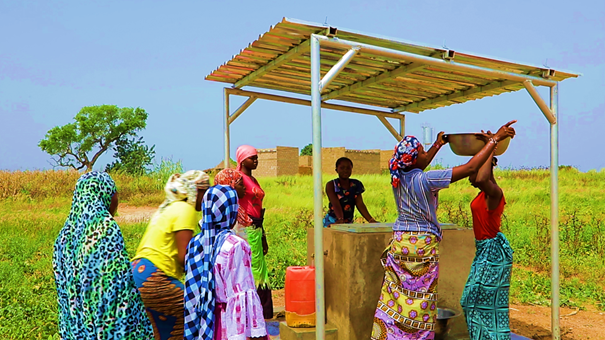
This video shows how the population from the village of Sigriyaoghin, Tenkodogo district in Burkina Faso, is benefiting from a newly installed rural piped water system
Published on: 09/11/2023
The village of Sigriyaoghin is one of the villages in the Tenkodogo district where people did not have access to improved water facilities and safe drinking water services. To obtain water for domestic use, mainly women and children, walked for long distances to fetch water. Also, it was physically demanding to pump up the water.
The time and effort spent each day collecting water prevented the women from concentrating on their livelihood activities and looking after their families. Fetching water also affected girls' ability to attend school on time and improve their prospects. On top of this there was also the challenge of poor hygiene in these communities.
With funding from The Church of Jesus Christ of Latter-day Saints, IRC has identified these needs and is investing in improving water and hygiene services in the communities, as part of the implementation of the Tenkodogo district's WASH master plan.
This year, the village has benefited from a rural piped water system with three standpipes providing running water that complies with quantity and quality standards, a more robust installation that considerably reduces the hardship suffered by local people and promotes sustainable access to drinking water. Today, almost 500 additional families have access to basic drinking water services in the Tenkodogo district thanks to this support. In addition, 5,300 pupils from 11 new schools have benefited from the hand hygiene promotion campaign. As a result, they are now protected against diseases linked to dirty hands and can concentrate on their studies.
This video shows the tangible impact of the actions implemented through direct testimonials from the people affected. It is a look at communities whose daily lives have changed thanks to this second phase of the WASH project in Tenkodogo. In the video (below), you can see children promoting the benefits of good hand hygiene and women collecting water not from a handpump, but this time from a tap. There are no longer any long distances to travel or major efforts involved in collecting water. Maria Galbane, a resident of the village, says that she used to draw water from a well, and then from the borehole equipped with a handpump installed by the village. "Pumping water was hard work, and the water was often polluted. Now, with the tap, there's hygiene. We are safe from bad diseases".